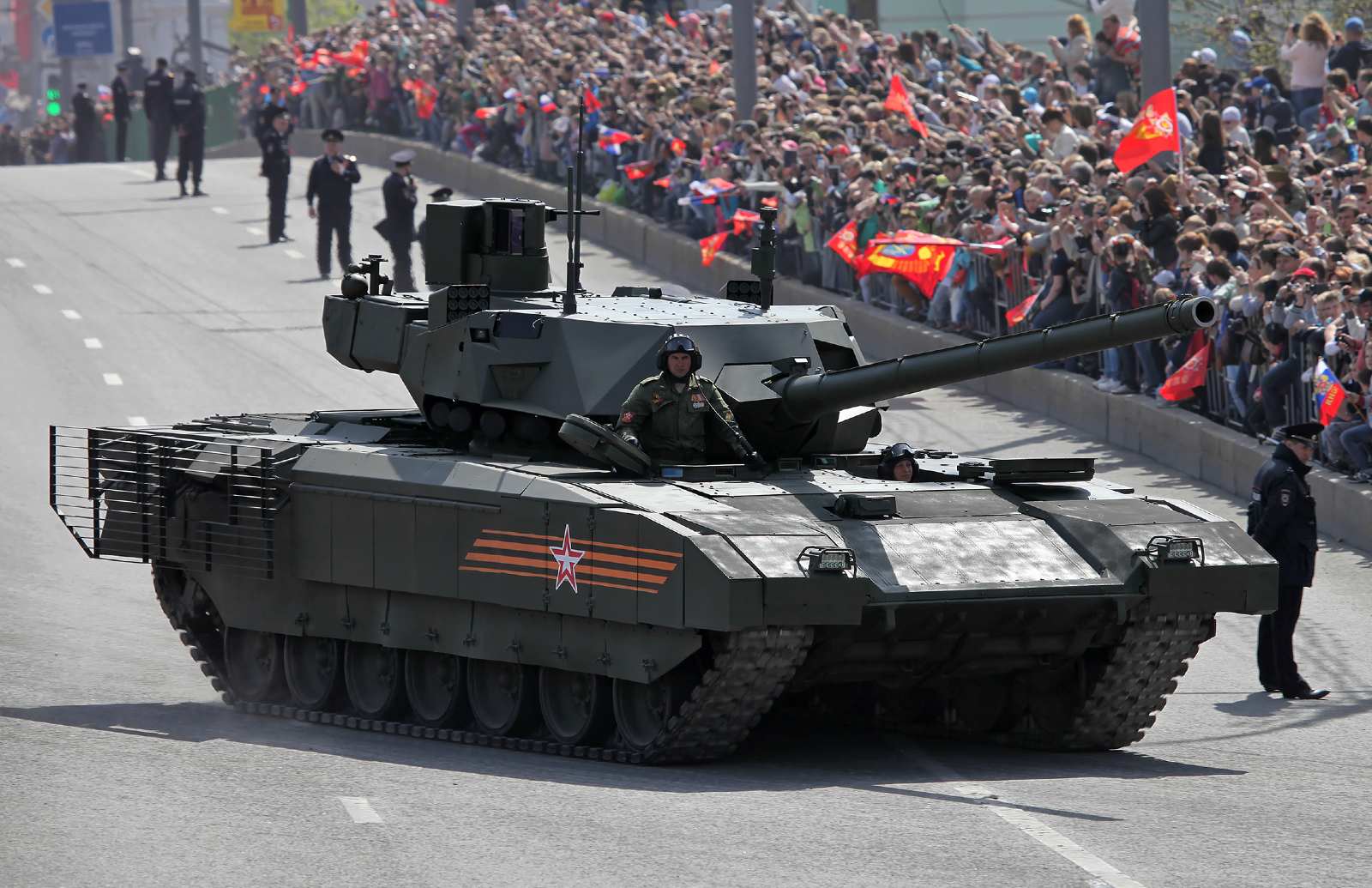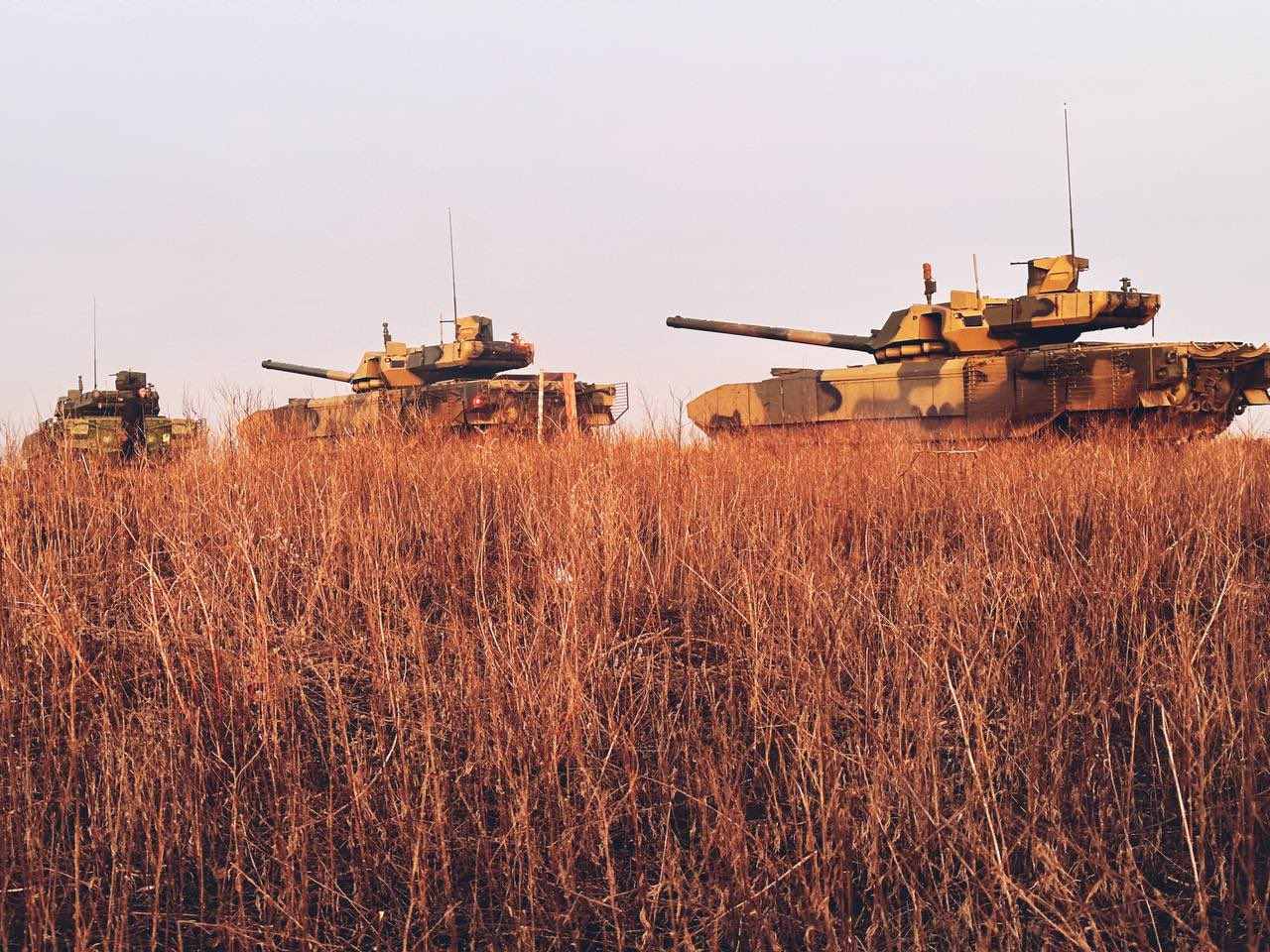Russia is keen to share Armata tank technologies with India to participate in the joint development of the future main battle tank for the Indian Army.
The T-14 Armata, one of the most sophisticated main battle tanks, has fully digital systems and an unmanned turret, and the crew is enclosed in a robust armored capsule.
Vladimir Drozhzhov, Deputy Director of the Federal Service for Military-Technical Cooperation (FSMTC) of Russia, said during the Aero India 2023 exhibition that Russia is interested in sharing Armata technologies for the joint development of the Indian Army’s future MBT.
When asked if India welcomed the Russian offer to build a main combat tank based on the Armata jointly, Drozhzhov responded, “The Russian side plans to take part in the joint development of the Indian MBT using modern Russian technologies in the field of tank building.”
The idea of India working with Russia on the development of MBT centered on the Armata Universal Combat Platform has been frequently discussed in the past few years.
The majority of India’s existing tank fleet, made up primarily of Russian-made T-72 and T-90 tanks, is technologically outmoded, particularly in terms of mobility, protection, and firepower.

This comes as India has sped up the acquisition of modern Main Battle Tanks to counter the dual threat on its western and northern frontiers.
In June 2021, the Army issued a Request for Information (RFI) to acquire 1,700 Future Ready Combat Vehicles (FRCVs) in phased-manner through the strategic partnership approach, with the introduction of the “future tank” projected to be completed by 2030.
The Request for Information (RFI) stated that in addition to the 1,770 FRCVs, other maintenance and training requirements, performance-based logistics, and technology would also be purchased.
According to the Army, the superior modern tank platform should have specialized technologies like artificial intelligence and be able to function in network-centric and electronic warfare environments.
Russian officials are confident that their Armata Universal Combat Platform can fulfill these demands and give the Indian Army a potent deterrent against its adversarial forces.
Besides that, Russia is keen to attract clients to help defray the cost of the tanks. Additionally, Moscow is probably attempting to revitalize its defense industry, which is currently under pressure from US-led sanctions.
Does Armata Meet India’s Requirements?
The T-14 Armata is a new-generation main battle tank (MBT) produced by a Russian company called Uralvagonzavod. It was first revealed at the Moscow Victory Day Parade in May 2015.
The Armata is designed on a modular battle platform and may be utilized to create other armored vehicles, such as large infantry fighting vehicles (IFVs) and armored personnel carriers (APC).
The T-14 Armata is equipped with an unmanned turret, a 125mm 2A82-1M smoothbore gun fed automatically. The turret has 45 rounds of ammunition, including ready-to-use rounds. The main gun can also be used to fire laser-guided missiles.
A previous analysis published by the EurAsian Times determined that the T-14 can function in temperatures as low as -50 degrees Fahrenheit. The tank is reportedly appropriate for the Indian Army’s needs in high-altitude areas.
The T-14 might be viewed as providing the Indian Army with a potent deterrence against China. Beijing claims its VT-4, manufactured by the Chinese arms manufacturer Norinco, is among the best in the world.

Of course, whether the VT-4 is on par with the T-14 is debatable. But the T-14 would undoubtedly be a reliable foundation for the Indian Army’s future main battle tank.
Nevertheless, the question of whether tanks can survive on the battlefield has been resurrected by photographs of wrecked tanks in the Ukraine conflict. Russia is now said to be deploying its T-14 Armata tank in Ukraine.
It has been reported that several technological difficulties have hampered the tank’s development. Russian forces have recently been hesitant to accept the first batch of T-14s given to them, the British MoD stated in its intelligence assessment dated January 25.
In 2020, three T-14s were allegedly damaged by TOW-2B anti-tank weaponry, while one Armata was destroyed. Nonetheless, the sanctions imposed on Russia following its invasion of Ukraine would make it difficult for the Indian Army to negotiate such an agreement with Moscow quickly.
- Contact the author at ashishmichel(at)gmail.com
- Follow EurAsian Times on Google News




